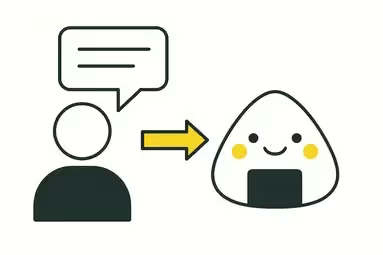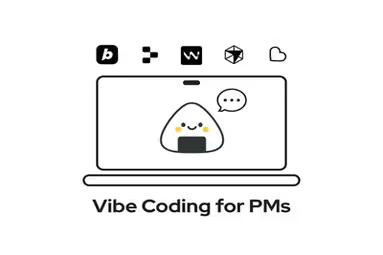.webp)
Product Management vs. Product Marketing: Key Differences
Product management vs product marketing—who owns what, where they meet, and how to collaborate on strategy, roadmap, and go-to-market. Learn the playbook.

Product Management vs. Product Marketing: What’s the Difference?
If you’ve ever asked “product management vs product marketing—who owns what?” you’re not alone. The roles overlap on customer insight and business impact, but their centers of gravity are different: Product Management (PM) decides what to build and why, while Product Marketing Management (PMM) decides who it’s for, why it’s different, and how it wins in the market. High-performing teams make those boundaries explicit—and then collaborate so customers experience one coherent story from discovery to renewal.
This guide breaks down responsibilities, artifacts, handoffs, and cadence—plus a lightweight operating model you can start using this week.
The One-Line Difference
- PM: Owns the problem and the product choices—customer jobs, prioritization, specifications, and outcomes in product.
- PMM: Owns the positioning and the path to market—segmentation, narrative, pricing/packaging inputs, launch, and sales/CS enablement.
Both share customer research, but use it differently: PM translates insights into roadmap bets; PMM translates insights into market narratives and motion.
Core Responsibilities: PM vs PMM
Product Management (PM)
- Problem & opportunity framing: Define jobs-to-be-done, success criteria, constraints.
- Prioritization & roadmap: Sequence bets; manage trade-offs across UX, tech, and revenue.
- Specs & product quality: Thin slices, acceptance criteria, instrumentation.
- Experiments & learning: Hypotheses, A/B tests, activation/retention loops.
- Post-ship outcomes: Adoption, task success, performance, reliability.
Key artifacts: Problem one-pagers, specs, decision log, PRD (lightweight), experiment briefs, product analytics dashboards.
Product Marketing (PMM)
- Market intelligence: ICPs, personas, competitive snapshots, win/loss.
- Positioning & messaging: Value pillars, narrative, objection handling.
- Go-to-market strategy: Motions (PLG/sales-led), channels, launch tiering.
- Pricing & packaging inputs: Value metrics, bundles, buyer journeys.
- Enablement & demand: Pitch, demo storyline, battlecards, campaigns.
Key artifacts: Positioning doc, messaging framework, GTM plan, launch brief, enablement kit, case studies.
Want a deeper dive into how these roles reinforce each other? See our overview: Product Management Strategy—How PM & Product Marketing Drive Success.
Collaboration Lifecycle: From Insight to Launch
Think of PM × PMM as a relay race with overlapping zones—no dropped batons.
- Insight (shared)
- PM and PMM conduct/customer interviews and analyze product usage.
- Output: ICP hypotheses, top pains, “value moments,” early opportunity map.
- Strategy (split, but aligned)
- PM: Selects 1–3 product bets and defines success metrics and thin slices.
- PMM: Chooses target segments, crafts positioning, outlines the GTM motion.
- Joint checkpoint: Does the product choice prove the market promise—and vice versa?
- Build & Validate (PM-led)
- PM: Specs, experiments, instrumentation, weekly “demo the delta.”
- PMM: Drafts messaging, tests narrative with prospects, preps enablement.
- Launch (PMM-led)
- PMM: Orchestrates launch tiering, channels, content, PR/analyst outreach.
- PM: Confirms readiness (docs, support macros, analytics), monitors guardrails.
- Post-Launch (shared)
- Readouts on adoption, pipeline influence, win/loss, and feedback loops to roadmap and messaging.
- Decide: Press, pivot, or pause.
Who Owns What: RACI Cheat Sheet
ICPs & Personas
- PMM: Responsible & Accountable (leads research, segmentation, personas)
- PM: Consulted (shares discovery insights, validates problem context)
Problem Framing & Success Metrics
- PM: Responsible & Accountable (writes problem statement, picks outcome metrics)
- PMM: Consulted (adds market context and buyer insights)
Positioning & Messaging
- PMM: Responsible & Accountable (narrative, value pillars, objection handling)
- PM: Consulted (ensures claims match product truth and proof)
Pricing & Packaging Inputs
- PMM: Responsible & Accountable (partners with RevOps/Finance on strategy)
- PM: Consulted (provides usage data, value metrics, feasibility)
Roadmap & Prioritization
- PM: Responsible & Accountable (chooses bets, sequences work)
- PMM: Consulted (market signals, competitive pressure, ICP nuance)
Launch Tiering & Go-to-Market Plan
- PMM: Responsible & Accountable (channels, content, tiering, calendar)
- PM: Consulted (readiness: docs, support, analytics, risk)
Sales/CS Enablement
- PMM: Responsible & Accountable (pitch, demo storyline, battlecards)
- PM: Consulted (keeps demo accurate, supplies product proof)
Product Analytics & Experiments
- PM: Responsible & Accountable (hypotheses, instrumentation, readouts)
- PMM: Consulted (turns results into narrative and proof points)
Win/Loss Synthesis
- PMM: Responsible & Accountable (collects themes, competitive reasons)
- PM: Consulted (feeds insights into roadmap choices)
Key: “Responsible & Accountable” = owns the work and the decision. “Consulted” = gives input before the decision.
Metrics That Matter (and Who Tracks Them)
PM (product health & value)
- Activation rate & time-to-first-value
- Feature adoption & task success
- Retention cohorts, NPS verbatims tied to usage
- Performance & reliability guardrails
PMM (market fit & revenue influence)
- Segment-level acquisition & conversion (self-serve and sales-assisted)
- Pipeline influenced / PQL→opportunity conversion
- Win rate by segment & competitive reason codes
- Content/enablement usage and impact on deal stages
Shared: North-star outcome for the bet (e.g., +5% activation in Segment X) and a monthly narrative readout (“what we believed, what happened, what we’ll change”).
Startup vs Enterprise: How the Split Changes
- Early-stage startup: Hats are shared. One person might cover both roles. Bias toward speed, thin slices, and narrative testing. Write down assumptions; revisit monthly.
- Scaleup: Clearer swimlanes, more GTM specialization (PLG + product-led sales). Invest in a real messaging framework and a cadence of launch tiering.
- Enterprise: Complex buying centers. PMM leads multi-persona narratives, competitive strategy, and enablement; PM coordinates platform roadmaps and cross-team dependencies. Decision logs prevent re-litigation.
Common Failure Modes & Fixes
- Problem: Launch theater (big splash, low adoption).
- Fix: PM enforces readiness (docs, support, analytics), PMM narrows the ICP and channels; both agree on a single primary metric for day-30.
- Problem: Feature factory vs campaign carousel (disconnected stories).
- Fix: Quarterly theme bets owned jointly. Every roadmap item ties to a message pillar; every campaign maps to a product proof.
- Problem: Role confusion (who decides?).
- Fix: Publish a one-page RACI, add a decision log, and set review dates. PM decides what to build next; PMM decides how we take it to market.
- Problem: Messaging overpromises, product under-delivers.
- Fix: PMM proof-checks claims with PM and real usage data; PM prioritizes the gap between promise and reality in the next sprint.
FAQs
PM owns the product choices—prioritization, specs, and outcomes inside the product. PMM owns the market choices—positioning, segments, pricing/packaging inputs, launch, and enablement. They share research and influence each other’s plans.
Usually PMM leads pricing & packaging strategy with finance/rev ops, while PM provides usage data and value metrics. Final accountability varies by org size; write it down in your RACI.
In early stages, yes—but be explicit about which hat you’re wearing. Time-box GTM tasks so product discovery and delivery don’t stall. As complexity grows, split the roles to prevent dilution.
PMM is their primary partner for narrative, proof, and enablement. PM joins strategic deals to validate feasibility and influence roadmap with high-signal requests.
Conclusion
The cleanest way to think about product management vs product marketing is this: PM decides the product bets; PMM decides the market bets. Great companies make the seam between them invisible to customers—because they co-create the narrative, validate it with product proof, and share a rhythm of experiments, launches, and readouts. Write down your swimlanes, align on a few shared metrics, and run the loop together. That’s how strategy turns into adoption, and adoption turns into revenue.
Read More Posts
.webp)
Product Manager vs. Product Owner vs. Project Manager

Customer Interview Techniques for Better Product Decisions

How to Add Value in 2 Weeks: From Our Experience as Interim Product Managers

Introduction to Vibe Coding for Product Managers: From Idea to MVP

Communication Tips for Product Managers That Get Responses



